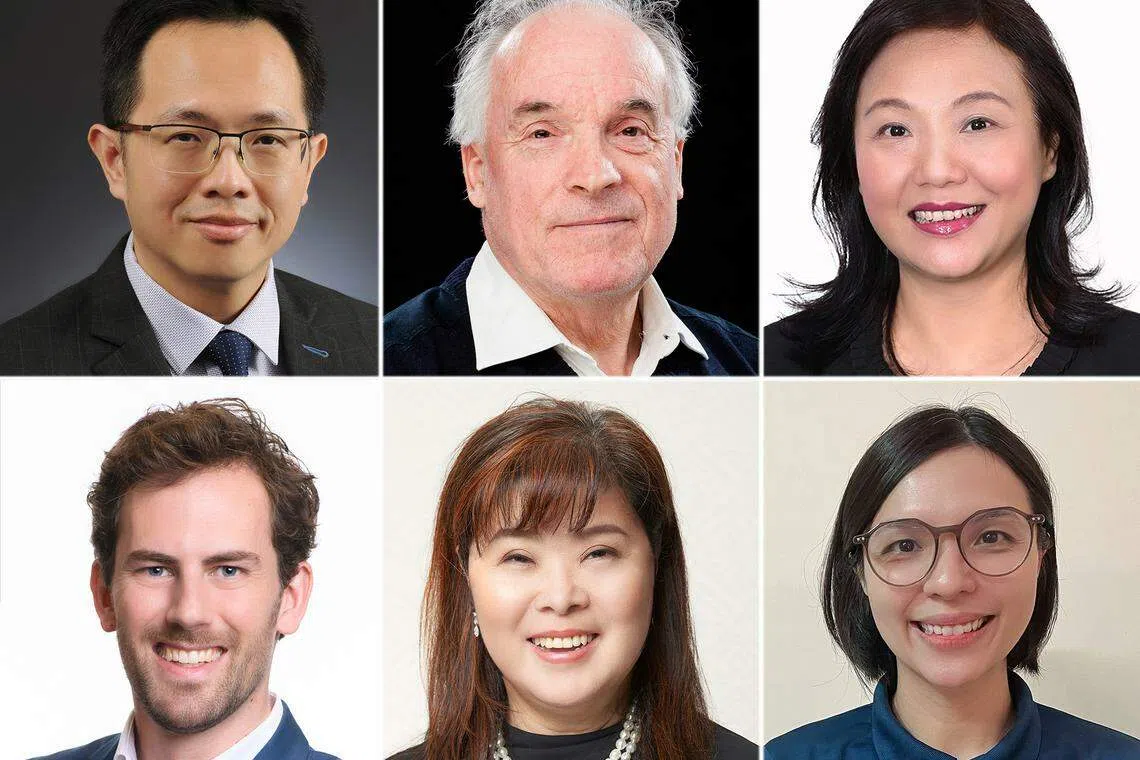Podcast: What it takes to keep Singapore cool

JUST step out your front door on an average day, and you will feel it. There’s no denying that temperatures in Singapore, and across the region, have been rising.
So what’s being done to keep Singapore cool – and is it working? The Business Times podcast correspondent Howie Lim spoke to several experts and industry players to find out more for the latest episode of BT’s “Lens on Singapore” podcast.
Here’s a look at what was discussed:
1. Staying cool isn’t cheap
With El Nino conditions currently affecting many parts of the world, including Singapore, it’s no surprise that many here keep their air-conditioning on for longer at home.
However, this cooling comfort comes at a price amid rising energy costs – a trend that’s being seen globally.
“In Singapore terms, Italians are paying nearly 60 cents a unit for electricity. People in Pakistan are seeing 100 per cent increase in electricity (price). Even in Australia, people have just seen a 20 or 25 per cent rise in their electricity costs,” says James Trevelyan, emeritus professor at the University of Western Australia’s Engineering School.
A NEWSLETTER FOR YOU

Asean Business
Business insights centering on South-east Asia's fast-growing economies.
“And all of this is connected with the need to reengineer our energy systems throughout the world for a renewable future. It’s expensive, but people want that,” he adds.
Prof Trevelyan is also the inventor of Coolzy, a portable, energy efficient and localised mini-air conditioning system that provides focus cooling directly to where it’s needed in a home. He noted that his company had seen healthy sales during the COVID-19 pandemic period – when more people worked from home and realised the cost of keeping their conventional air conditioners on for extended periods.
And while modern air conditioning systems tend to be more energy efficient, they still require a “significant amount” of electricity, says Professor Lee Poh Seng, executive director of the Energy Studies Institute.
“Hence, while they are part of the solution, they are not the entire solution. Combining them with other passive cooling strategies and efficient energy use can enhance the sustainability,” he adds.

2. Making sustainable changes
One of the biggest reasons Singaporeans enjoy spending time in shopping malls is the respite they offer from the sweltering daytime heat. So it’s good to know that mall owners, too, think sustainably when it comes to keeping their properties cool.
At the Paragon mall in Orchard Road, changes to elements such as the building’s chiller and air-handling unit have led to lower energy consumption – of up to 30 per cent – when it comes to keeping the premises cool, says Susan Leng, the chief executive of Paragon Reit Management.
“So these are quite meaningful savings, which lead to less carbon footprint,” she notes.
For Janice Wu, the head of Corporate Development at Cuscaden Peak Investments – Paragon Reit’s parent company – cooling solutions are part of the company’s considerations when building residences, too.
“So the facing of the buildings, the kind of materials that we use, and the greenery that we have planted or adds to making the development cooler. You will see that there is a lot of greenery that will help to absorb heat and reduce the need for even more air conditioning,” she says, referring to the company’s Woodleigh Mall and Woodleigh Residences projects.
On a larger scale, district cooling efforts in Singapore are also showing results, with developments like the Marina Bay district cooling network reducing annual carbon emissions by nearly 25,000 tonnes, according to Suaw Ching Yi, the principal engineer at SP Group’s Sustainable Energy Solutions division. This carbon footprint reduction is the equivalent of taking 22,000 cars off the road each year, she adds.
Noting that Singapore has one of the highest numbers of district cooling operators in South-east Asia, Suaw says that the close proximity of buildings here makes the country very suitable for such a system, which involves the use of a centralised service to distribute chilled water to buildings within a specific area.
Singapore is also looking to roll out district cooling for the upcoming Tengah township, although complaints have already been received about how the system has been set up in the area’s new Build-to-Order (BTO) flats.
3. Staying cool without going broke
So, can we better cope with the baking weather without spending all our savings? Prof Lee has some suggestions.
“Individuals can employ a combination of passive cooling strategies to stay comfortable without breaking the bank. For example, they can use fans to promote air circulation and, if possible, try to take advantage of natural ventilation by opening windows in a way that promotes cross ventilation. The use of shades, blinds, or curtains to block the sun during the hottest part of the day, as well as to wear light-coloured clothing, can actually help to enhance thermal comfort,” he says.
Prof Lee also notes that businesses and governments can do their part by promoting tele-working to reduce cooling demand in office buildings.
Meanwhile, Sebastien Walker, head of business development (mixed-use and real estate) at Engie South-east Asia, believes that cooling is a “matter of public health” and that consumers can make better decisions.
“For example, when you choose your apartment, when you choose the buildings where you’re going to live, maybe choose a building that is built sustainably that will decrease the need that you have for air conditioning. When you choose a car, go for an electric vehicle,” says Walker, whose company provides cooling solutions.
“All these small decisions, or these decisions of everyday life, have an impact on society and push it towards a more sustainable society, which is the way we have to fight the climate crisis,” he adds.
KEYWORDS IN THIS ARTICLE
BT is now on Telegram!
For daily updates on weekdays and specially selected content for the weekend. Subscribe to t.me/BizTimes
Singapore
Beyond giving grants, EnterpriseSG seeks to be more proactive about helping businesses transform
100 years on, SICCI to focus on internationalisation, digitalisation and sustainability
Taylor Swift effect: Singapore hotels’ average room rate grows in March; tourist arrivals reach new post-Covid high
Singapore top recipient of Q1 cross-border investments in Apac: Knight Frank
Shanmugam, Vivian seek aggravated damages from Lee Hsien Yang over post on Ridout Road rentals
Singapore and Canada to enhance science and technology cooperation
